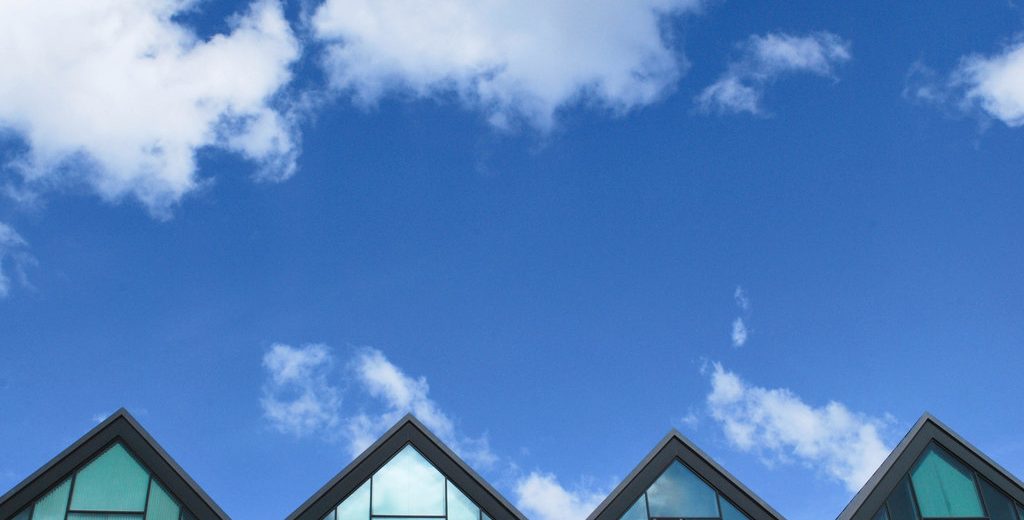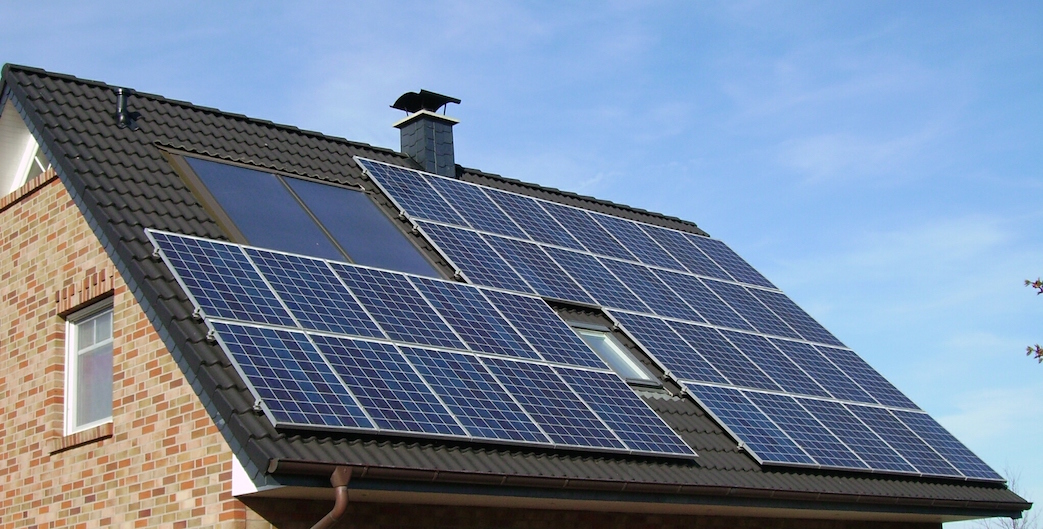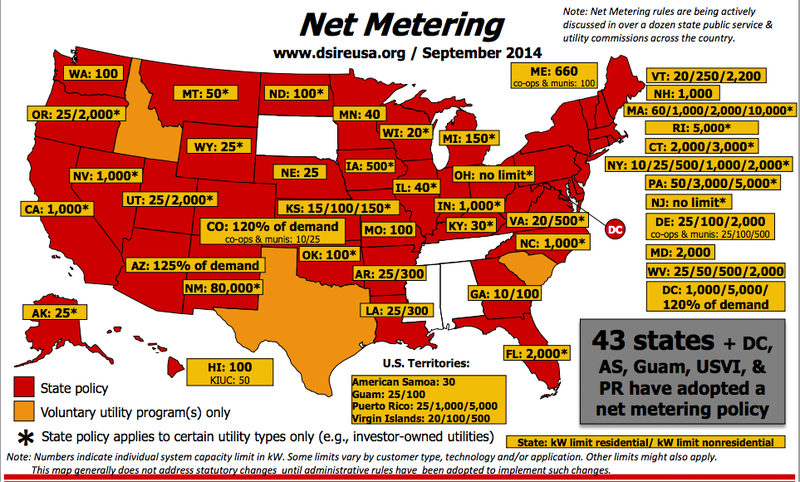Best Angle for Solar Panels

Best angle for solar panels: Does the pitch, angle, orientation and overall roof position affect solar panel output? What direction should solar panels face?
You’ve done your research, you’ve picked out an installer and system you like, and you know what you want. However, you’re not sure where you should put your new solar system on your house. How does roof positioning affect solar panels?
Installing solar power means making a number of decisions, and high on that list is where the panels should be placed. The answer isn’t as straightforward as it seems, or even as it used to be. Since residential solar’s infancy just two decades ago, conventional wisdom has dictated that the panels face true south, since that orientation is thought to provide them with the maximum possible sun exposure throughout the day.
This assumption, however, was turned upside-down in 2014 when new research surfaced, indicating that there may be a better way – at least for some solar customers. What’s a solar buyer to do, amid conflicting expert opinions and an ever-changing landscape of renewable energy technology? We’ll take a look at the differing viewpoints on solar panel direction, various factors that should be taken into consideration, as well as what the evidence says.
What’s the Best Angle for Solar Panels?
Ideally, you want your solar system to be on the area of your roof that faces south, specifically southwest. That’s because you’ll get way more sunlight hitting the roof, thereby converting into way more energy. True south, or the geographic south, will yield the best results overall. Your solar installer will calculate the magnetic declination of your home to make sure the panels are fitted to face true south.
But What About Facing West?
Forbes cited one study that had bloggers questioning whether panels should really face west. While it’s true they should face south for the best results, a west-facing system “would have produced 49 percent more electricity during the peak demand hours of the summer months than a south-facing system.”
Roof Position: What the Research Reveals
In late 2014, energy management firm Opower made waves when it released data which implicated south-facing solar panels in a failure to take advantage of power production at the most critical times of day. While there is no debate over the fact that south-facing panels do, indeed, produce more power than any other orientation throughout the course of a year (to the tune of an additional 10-20%) the sticking point lies in the concept that they do not produce enough energy at the right times.

One thing to keep in mind is that Opower’s data was drawn from solar arrays in California and other areas in the western United States – so it does not necessarily reflect a true average of the needs and power production of homes nationwide. Still, the essential facts of the sun’s position and the system’s exposure at certain times of day hold true no matter where in North America you’re located.
Opower looked at the electricity data of 25,000 western U.S. homes equipped with solar arrays, along with over 100,000 residential solar projects in California. Of those homes, 71% of the panels have a southern compass orientation. Just 9% of the surveyed homes have a solar array which sits within 10 degrees of facing due west.
Why Facing West?
What is it about a westerly oriented solar panel installation that is emerging as preferable, at least in some locations? While it’s true that south-mounted panels do produce more electricity overall, the problem is that their peak production time is throughout the midday hours – which also happens to be the time when demand is lowest. Conversely, peak electricity use occurs from late afternoon through early evening, the time of day when the sun’s angle offers west-facing panels the best exposure.
Why does it matter when the most power is produced by a solar power system? The reason is multi-layered.
TOU Pricing
Time-of-use rates have been a topic of great debate over the past several years. TOU is a way of tracking times of peak power usage in order to allow customers to adjust their consumption during times of the day when prices are higher. In order to do so, electricity usage must be monitored hour-to-hour through the use of smart meters. Most of the utility companies offering TOU rates do so as an optional program in which customers may choose to participate.
The reason TOU makes a difference when it comes to solar panel angle and orientation is that if your system is producing most of its power during the middle part of the day, when demand – and rates – are lower, you could pay more for the energy you use at other times.
Most residential solar systems provide a significant portion of a home’s energy needs, 50% or more; however, the remaining needs must be purchased through the utility company. If your home is drawing more power later in the day, but your panels were producing excess electricity around noon, this causes an efficiency gap because the system isn’t operating at peak production during the time you need it most.
Roof Position and Net Metering
Data shows that nearly all solar installations are net metered. This means that excess power produced by solar arrays is fed back into the power grid and customers receive some type of compensation for providing this energy to the utility company.
Net metering practices vary widely according to each state’s legislation as well as each individual utility company’s policies. In the case of those which compensate solar customers at the retail rate, particularly if they use time variable rates (different per kW prices based up peak hours and/or seasons, such as TOU), the best situation is to be producing excess power during times of the highest demand, hence the highest net metering compensation rates.

These factors all come back to the question of solar panel direction because a west-facing array can produce up to 50% more energy than a south-facing one during peak hours (between about 2:00pm and 8:00pm). This not only benefits you as the solar system owner, but there are trickle down effects for the entire grid as well.
Utility grids come under great stress during peak hours, particularly in warm climates where air conditioning use is at a maximum during certain times of the day and year. When this happens, some regions must fire up their “peaker plants” – power plants which are more expensive to run and produce more pollution – in order to supplement the normal electricity supply. The fewer households in need of extra power during these times, the better because the impacts include reduced environmental impact, and fewer brownouts and outages.
California Jumps on the West-Facing Bandwagon
As the debate over solar panel direction rages on in the renewable energy community, California has already positioned itself solidly behind the theory that the arrays are most beneficial to everyone involved when they face the Pacific Ocean. The state has implemented an increase in its renewable energy rebate, making up to $500 available to solar customers who choose this unconventional placement. As part of its New Solar Home Program California provides this reward for west-facing arrays, along with other supports and financial incentives for home builders and owners who choose energy-efficient construction for new residential dwellings.
It comes as no surprise that the Golden State is encouraging the shift away from south-facing solar installations.
California already suffers extreme power challenges during the heat of summer, particularly in Southern California where thousands of residents have already had a taste of outages which could plague the state throughout the rest of what’s shaping up to be a sweltering season.
The usual energy shortages which are part and parcel of California living have been exacerbated by last fall’s leak at the Aliso Canyon natural gas storage facility. Because Aliso Canyon is a major player in supplying gas-fired power stations with the fuel needed to address demand in emergencies, such as heat waves, events like this can be catastrophic for traditional utility customers. The state hopes that the incentive for west-facing solar panels will help to reduce the problem of peak hour power demand over the long run, facilitating a reduction in the emergency planning necessary to protect the power supply statewide and preventing outages.
Different Strokes
While the mystery of the best solar panel direction may seem clear for those who live in the western U.S. and other states with a hot climate, it’s not so cut and dried for the rest of the country. Ultimately, the decision boils down to a complex combination of factors, all of which you’ll want to take into consideration before finalizing installation plans.
The best orientation for one home may not be the most productive choice for another, depending upon typical weather conditions, roof angle, sun angle during peak demand hours, and local considerations such as how your utility deals with excess power production.
For example, if you live in New England, you may not need the air conditioning to run very often, or even have central air installed in your home. Your region may not struggle with meeting energy demands during the summertime, as California does, which means that the time of day during which your system produces the most power may not significantly impact the rest of the grid. That 10-20% of extra energy produced annually by a south-facing array may be more valuable in your situation than a boost during late afternoon hours in the summer.
You’ll also want to ensure that you know the details of the rate plan you’re on with the utility company, and whether it would behoove you to be able to sell back the power you’re producing during peak hours rather than in midday when rates are typically dirt cheap. Some states place a cap on the amount of energy you can sell back to the grid, so you’ll want to find out if this is the case for your location as well.
Other Orientation Options
While the general consensus in the solar power industry is that either west or south is the best direction for solar panels to face, these two options don’t necessarily address the needs of every individual solar user. Each situation is unique in terms of roof angle, property layout, and power consumption. As a result, other questions may arise in the course of planning your installation.
• What if the roof angle is not aligned north/south or east/west? • What if there are trees or other obstructions surrounding your home which produce enough shade to interfere with sun exposure? • How can you take advantage of the sun’s angle as it moves across the sky, and not just when it happens to shine directly on your panels?
There are some other options for solar installation which can address these issues and maximize your system’s performance.
#1 Alternative Mounting Location: A solar array can be mounted somewhere other than a home’s roof – it can be installed on a shade-free area of the ground, or on the roof or wall of another building, such as a garage or shed. This is a good option if the house roof cannot support the panels or there is a building with a better roof angle for maximum sun exposure.
#2 Solar Trackers: Trackers are structures which hold the solar panels in order to move and/or tilt them according to the position of the sun. They cannot be mounted on a slanted roof; however, solar trackers can be used on a ground installation or on a flat roof. They are available in versions which move on one axis – allowing side to side movement – or two, permitting adjustment not only for solar panel angle but degree of tilt as well.
The main disadvantage of this option is that they can cost up to several thousand dollars extra. On the other hand, use of trackers can increase energy production up to 35%, allowing you to install fewer panels.
#3 Larger System: You can simply choose to install more panels if your roof angle is not ideal for sun exposure from either the south or the west. This will cost more at the outset, but ultimately yield more energy without having to make drastic changes to the installation location or method.
A Note on Roof Tilt
While the vast majority of solar customers choose a fixed angle upon installation of the system, there are panels which can be manually adjusted throughout the year in order to fine tune sun exposure and get the most power production possible. If you want this option available, it’s important to make this clear to your installer before choosing a system and having it mounted – once the panels are in place, it’s virtually impossible to adjust the tilt angle unless they are designed to allow this movement.
As technology advances and the solar community learns even more about how best to get the most from a solar array, the discussion on solar panel direction will no doubt continue to be at the forefront. In the meantime, the best way to make the right decision for your system is to take the above factors into consideration and talk to your installer about their recommendations for your particular setup.
What Direction Should Solar Panels Face?
The bottom line is, you’re going to get a lot more energy with solar panels, and you will be saving money on this renewable energy for years to come. Besides, your solar installer will work with you no matter which way your roof faces to help you maximize solar energy earning potential.
